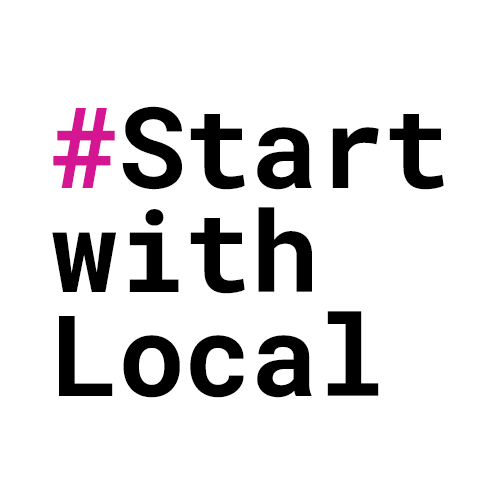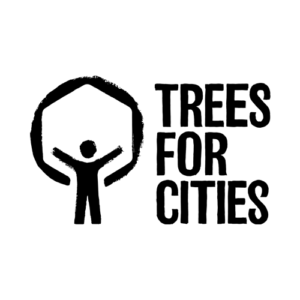Street trees are great for both our physical and our mental wellbeing, and that’s a fact. We can all appreciate how a verdant tree-lined street just feels right, and how we feel the opposite when we’re in a street or housing estate with few or no trees. There’s something inbuilt within us that is lifted by the connection with nature that street trees provide in the built environment.
But this isn’t just a feeling, it has a scientific basis.
Encouraging physical exercise
Trees make our streets much nicer places to be, and being so, help encourage people to get out and take exercise. It’s that simple.
A well-treed urban landscape is more sheltered, more stimulating, and more likely to encourage local journeys on foot or bike, thus making active outdoor exercise more enjoyable.
Trees Matter report, by the National Urban Forestry Unit
Results from a European survey showed that people living in a green environment have a three times higher probability of being physically active, and a 40% smaller probability of being overweight or obese (Ellaway et al., 2005).
The Research Agency of the Forestry Commission report on the Health Benefits of Street trees
During lock-down many of us went out for our daily exercise, and as a result will have become far more acquainted with our local streets than ever before, and hopefully now more demanding. We know the streets we like to go walking in and they tend to be the ones with trees.
Cleaner air
There isn’t a day goes by that we don’t read about the impact of air pollution on our nation’s health.
Air pollution is the biggest environmental threat to health in the UK, with between 28,000 and 36,000 deaths a year can be attributed to long-term exposure. There is strong evidence that air pollution causes the development of coronary heart disease, stroke, respiratory disease and lung cancer, and exacerbates asthma.
Public Health England
If our streets, by being lovely places to be in, encourage people to make less journeys by car then this is an immediate impact on pollution, but trees also have a physical impact on airborne pollution.
Street trees have been shown to help disperse AND to capture airborne pollution.
Urban vegetation can greatly reduce the amount of emissions people are exposed to. It does this by changing the distance they must travel from the source to reach people, and the extent to which they are diluted with cleaner air along the way – this process is known as dispersion.
Impacts of Vegetation on Urban Air Pollution, 2018 by the Air Quality Expert Group (AQEG)
Emotional wellbeing
The popular belief that people feel better in green leafy surroundings, is now backed up by a growing body of science.
The environmental psychologist, Roger Ulrich, conducted, what’s now become a very well-quoted study, that showed that hospital patients recover quicker if they have a view of nature. This has led to changes in hospital design.
Trees for Cities, a co-founder of the Trees for Streets project, reported that, ‘doctors prescribe fewer antidepressants in urban areas with more trees on the street and a large number of studies showed that nature fosters recovery from mental fatigue and that it has restorative functions.’
An Australian study (Thomas Astell-Burt, PhD; Xiaoqi Feng, PhD), on the impact of urban greening on mental and physical health, concluded that, ‘Protection and restoration of urban tree canopy specifically, may be a good option for promotion of community mental health.’ This study looked at the variations in health of their subjects depending on the type of urban green infrastructure they were exposed to.
Shade
Street trees provide shading. This helps to protect our skin from cancer, and our eyes from cataracts, which would have resulted from increased exposure to the sunrays from a lack of trees in the streets we walk in. Shading also helps reduce the impact of very high temperatures on the vulnerable, which reduce heat-stroke and other heat related health problems. Air temperatures in the shade of a tree are less than in the direct sunlight. Seems obvious really.
Not all streets are equal
Sadly, there appears to be a marked imbalance in access to greenery between affluent and less affluent areas. I’m sure each one of us will have noticed these differences. It’s interesting that houses on mature tree-lined streets will fetch more than those on identical streets without trees. Isn’t it fascinating how we place a monetary value on the benefit brought by our humble street trees.
The Friends of the Earth report on England’s Green Space Gap, reported that ‘The stand-out finding is that if you are a person of black, Asian or minority ethnic (BAME) origin you are more than twice as likely as a white person to live in areas in England that are most deprived of green space. 42% of people of BAME backgrounds live in England’s most green space-deprived neighbourhoods, compared to 16% of white people.
Trees for Streets
One of the reasons Trees for Streets was set up, was to redress this imbalance. Councils can participate in this national sponsorship scheme to help fund more trees in the less affluent areas. We can work with councils to help focus external grant funding into the more needy areas, and we can work to engage with the communities in these neighbourhoods.
Get involved
Trees for Streets is a tech-for-good project, a collaboration between the civic innovator, Start with Local and the progressive charity, Trees for Cities.
The Trees for Streets scheme will be going live to the public from Easter 2021, hosting and promoting street tree sponsorship schemes on behalf of local councils, but it you’d like to find out more in the meantime, do get directly in contact us at team@treesforstreets.org, or join our mailing list.
get involved
Trees for Streets is a tech-for-good project, a collaboration between the civic innovator, Start with Local and the progressive charity, Trees for Cities.
The Trees for Streets scheme will be going live to the public from Easter 2021, hosting and promoting street tree sponsorship schemes on behalf of local councils, but it you’d like to find out more in the meantime, do get directly in contact us at team@treesforstreets.org, or join our mailing list.


